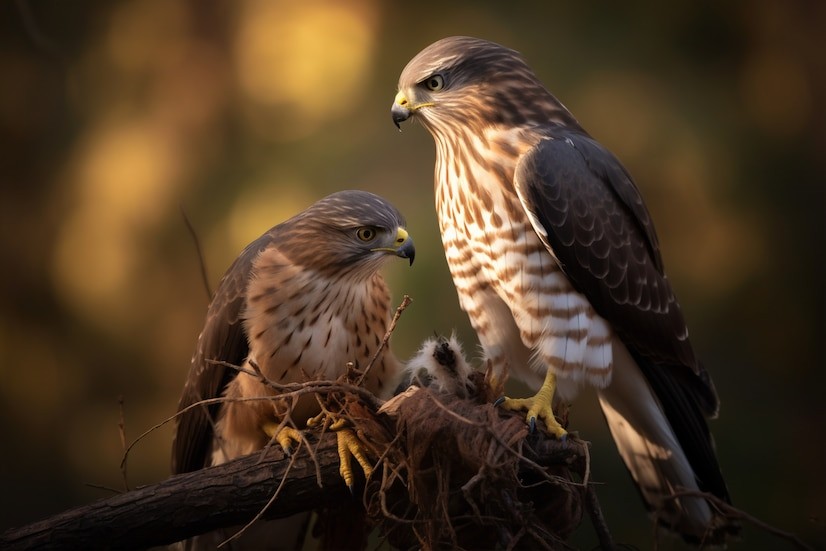Birds of prey animals, also known as raptors, are fascinating creatures that captivate bird watchers and nature enthusiasts alike. These birds are known for their impressive hunting skills, sharp talons, and keen eyesight. Understanding the different species of birds of prey animals, how to identify them, and their natural habitats can significantly enhance your bird-watching experience. This comprehensive guide explores a list of birds of prey animals, offers tips on identification, and discusses their preferred habitats.
What Are Birds of Prey Animals?
Birds of prey animals, or raptors, are predatory birds that hunt and feed on other animals. They are characterized by their strong talons, hooked beaks, and exceptional vision. The primary groups of birds of prey animals include:
1. Eagles
Eagles are large, powerful birds with solid beaks and talons. They are known for their impressive size and majestic appearance. Eagles primarily hunt large prey like fish, mammals, and birds. They are often found in mountainous regions, extensive forests, and near bodies of water.
2. Hawks
Hawks are versatile hunters that vary in size from small to large. They have broad wings and strong talons adapted for capturing prey. Common types of hawks include the red-tailed hawk, sharp-shinned hawk, and Cooper’s hawk. Hawks are found in various habitats, including woodlands, grasslands, and urban areas.
3. Falcons
Falcons are known for their speed and agility, making them exceptional aerial hunters. They have long, pointed wings and a streamlined body. Falcons like the peregrine falcon, kestrel, and merlin can be seen in open fields, deserts, and coastal regions.
4. Owls
Owls are nocturnal birds of prey with specialized adaptations for hunting in low light. They have large, forward-facing eyes and silent flight feathers. Typical owls include the barn owl, great horned, and snowy owl. Owls are typically found in wooded areas, forests, and open fields.
How to Identify Local Raptors
Identifying birds of prey animals can be challenging, but with some practice and attention to detail, you can distinguish between different species. Here are some key features to look for:
1. Size and Shape
Different raptors vary in size and shape. Eagles are large and powerful, while hawks range from small to medium-sized. Falcons are sleek and fast, with pointed wings. Owls have a distinctive rounded shape with large heads. Observing a raptor’s overall size and shape can provide clues to its species.
2. Plumage and Coloration
Birds of prey animals exhibit a range of plumage patterns and colors. Eagles often have a brown body with white head feathers. Hawks may have mottled or streaked feathers, depending on the species. Falcons are typically marked with streaks or spots, while owls have a variety of colors and patterns, including browns, grays, and whites.
3. Beak and Talons
Raptors’ beaks and talons are adapted for hunting and feeding. Eagles and hawks have large, hooked beaks for tearing flesh. Falcons have a notch in their beaks for killing prey quickly. Owls have a strong, curved beak and sharp talons for gripping and eating small animals.
4. Flight Patterns
Observing flight patterns can help identify raptors. Eagles often soar in broad circles or glide on thermal updrafts. Hawks may flap their wings rapidly or hover while searching for prey. Falcons are known for their high-speed stoops, diving toward prey from great heights. Owls fly silently with slow, deliberate wingbeats.
5. Calls and Vocalizations
Each species of raptor has its distinct call or vocalization. Eagles have a high-pitched whistle or chirp, while hawks may produce a series of sharp, whistling calls. Falcons often emit a high-pitched, repetitive scream. Owls are known for their hoots, screeches, or whistles.
Common Birds of Prey Animals and Their Habitats
Here is a list of common birds of prey animals and their preferred habitats:
1. Bald Eagle (Haliaeetus leucocephalus)
The bald eagle is an iconic American bird of prey known for its white head and tail feathers and dark brown body. Bald eagles are typically found near sizeable open water bodies, such as lakes, rivers, and coastal areas. They build large nests in tall trees or on cliffs.
2. Red-tailed Hawk (Buteo jamaicensis)
The red-tailed hawk is one of the most common raptors in North America. It has a distinctive reddish-brown tail and a varied plumage of browns and whites. Red-tailed hawks are adaptable and can be found in various habitats, including forests, grasslands, and urban areas. They often perch on tree branches or telephone poles while hunting.
3. Peregrine Falcon (Falco peregrinus)
The peregrine falcon is renowned for its incredible speed and agility. It has a sleek, grayish-blue body with a distinctive black “mustache” mark on its face. Peregrine falcons are often found in open areas such as coastal cliffs, mountainous regions, and extensive city buildings. They nest on tall structures and hunt birds in flight.
4. Great Horned Owl (Bubo virginianus)
The great horned owl is easily recognizable by its large size, tufted “horns,” and yellow eyes. Its plumage is mottled brown and gray. Great horned owls are versatile hunters and can be found in many habitats, including forests, woodlands, and urban parks. They often nest in tree branches or on cliff ledges.
5. Barn Owl (Tyto alba)
The barn owl has a distinctive heart-shaped face and pale, mottled feathers. It is known for its silent flight and exceptional hunting abilities. Barn owls are commonly found in open fields, grasslands, and agricultural areas. They prefer nesting in barns, old buildings, or tree cavities.
Protecting Birds of Prey
Birds of prey animals play a crucial role in maintaining ecological balance by controlling small mammals, insects, and other prey populations. To protect these magnificent creatures, consider the following actions:
1. Preserve Habitats
Protecting natural habitats is essential for the survival of raptors. Support conservation efforts and avoid disturbing nesting sites.
2. Avoid Pesticides
Pesticides can harm raptors and their prey. Opt for natural pest control methods and reduce pesticide use to protect these birds.
3. Support Wildlife Organizations
Contribute to organizations that work to conserve raptors and their habitats. These organizations often conduct research, rescue injured birds, and advocate for conservation policies.
4. Educate Others
Share your knowledge about birds of prey with others. Educating people about the importance of raptors can foster a greater appreciation and support for their conservation.
Conclusion
Birds of prey animals are a captivating group of raptors with diverse species, each possessing unique characteristics and behaviors. Learning to identify these magnificent birds and understand their preferred habitats can enhance your bird-watching experience and contribute to their conservation. Whether you’re observing a majestic bald eagle soaring overhead or spotting a sleek peregrine falcon in flight, appreciating the beauty and significance of birds of prey animals enriches our connection to the natural world.




